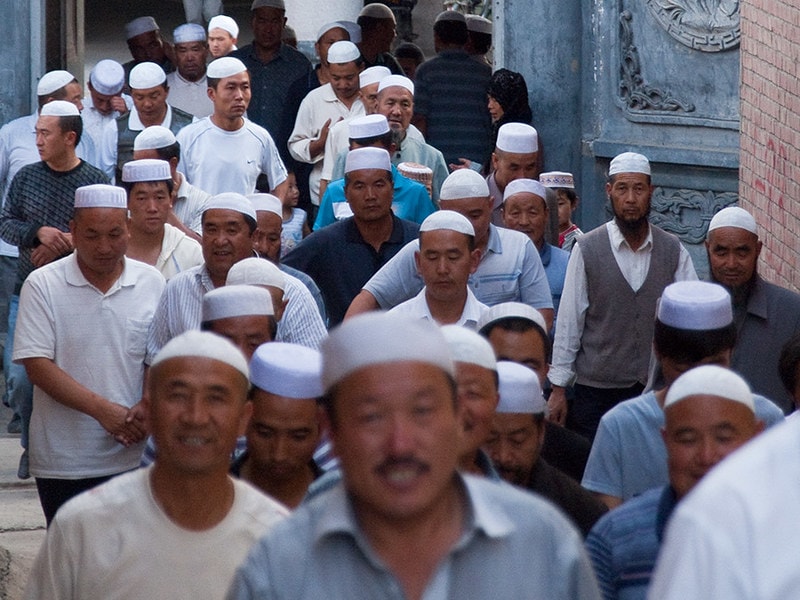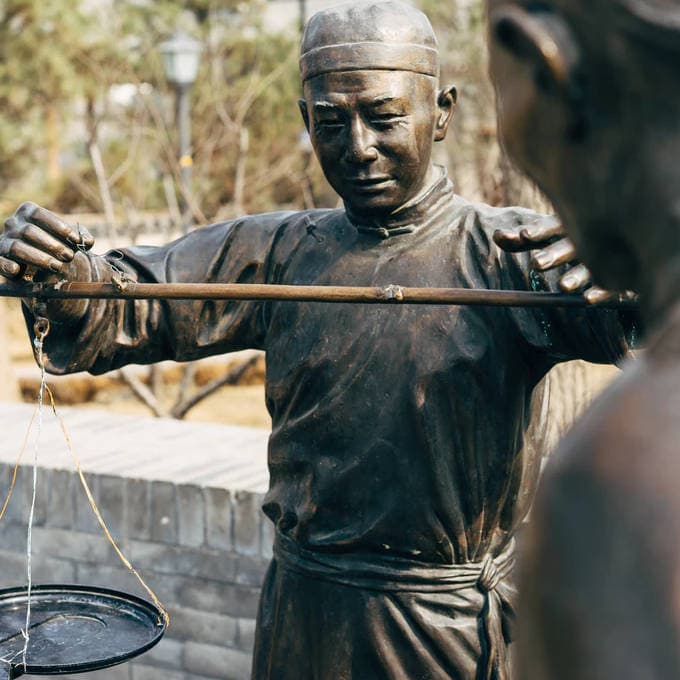Modern states, both liberal and non-liberal, tend to deploy totalitarian-style strategies which force an “internal other” to assimilate into the dominant group. Such assimilationist policies presume the existence of a mainstream society or culture to which ethnic or religious minorities must conform. Yet, the processes and strategies of assimilation may differ in content and degree, depending on a given state. In contemporary China, Muslim minorities are increasingly under the pressure of Sinicization (zhongguohua)—the assimilationist policies of the Chinese Communist Party (CCP). Among the Hui Muslim communities, the impact of Sinicization is reflected through mosque architectural style and language education. But it is important to note that the impact of Sinicization extends far beyond the Hui communities and into other minority groups. In a sense, the trend of Sinicization among Hui Muslims as a concrete manifestation of a series of totalitarian strategies led by an authoritarian regime in a Han-dominant society.
When we talk about Muslims in China today, we usually think of the Uyghurs, a Turkic-speaking Muslim population in the Xinjiang Uyghur Autonomous Region (XUAR) in the northwestern region. While the histories between the Uyghurs and the Hui are interrelated, the Hui differ from the Uyghurs in geographical, linguistic, and other aspects. The Hui constitute the largest Muslim ethnicity in the People’s Republic of China (PRC). According to the 2010 National Consensus, the Hui population is over ten million, slightly larger than that of the Uyghur population. While the Uyghurs mostly live in Xinjiang and speak a Turkic language, the Hui live in every province of China and speak various regional dialects. Therefore, the Hui are also known as Chinese-speaking Muslims or Sinophone Muslims.
The local Muslims resisted the order and protested en masse. Their act of resistance was videoed, photographed, and circulated widely online. The local government backed down but asked for “renovation”—a euphemism to remove the mosque’s green dome and minarets and replace them with Chinese-style pagoda domes.
Since 2017, the CCP has been implementing various Sinicization policies. For Hui Muslims, the Arabic-style architecture and Arabic language are two primary sites under such political pressures. In 2018, Weizhou Grand Mosque in Ningxia Hui Autonomous Region in Northwest China received a demolition order from the local government. The local Muslims resisted the order and protested en masse. Their act of resistance was videoed, photographed, and circulated widely online. The local government backed down but asked for “renovation”—a euphemism to remove the mosque’s green dome and minarets and replace them with Chinese-style pagoda domes. Another less visible, yet painfully felt trend, is the closure of many informal Qur’anic classes and even state-approved Arabic language programs. Some religious clerics (ahong) stressed that they would not teach Arabic classes outside the mosques or without the permission of the Islamic Association of China (IAC), a nationwide organization overseen by the CCP’s United Front Work Department.
These cases show that Sinicization amounts to Hanification (hanhua), meaning assimilation measured by the degree of conforming to the mainstream Han Chinese society. Han party officials consider the pagoda and big roof style as quintessentially Chinese. Removing the Arabic-style architectural elements or replacing them with the so-called Chinese-style structure thus reflects a Han-centric view on transforming religious spaces. This idea of assimilation is a legacy from the totalitarian tendency during the Mao era when art forms—ranging from literature, dance, film, to architecture—were to embody and further instill a singular ideology of the modern Chinese nation. Liang Sicheng, a renowned Chinese architect and intellectual, spear-headed the “Big Roof” (da wuding) design in Beijing in the 1950s, following the Soviet experts’ advice on the “Socialist content, national form” (shehui zhuyi neirong, minzu xingshi). While adopting a socialist ideology, what Liang and most other policymakers espoused is still a Han-centric vision of what a Chinese nation should look like in its buildings.
The Han-centric vision of architectural styles also flattens the internal diversity of Islamic landscape in China. Since the 1980s, China’s Islamic landscape has blossomed. The Chinese state has also facilitated the religious and commercial networks cultivated between China’s Muslim communities and other Muslim states in Asia, Central Asia, and the Middle East. However, with the growing Han chauvinism at home, the CCP increasingly tends to project a homogenous image of Muslim cultures through Sinicization. For instance, since the 2000s, the city of Yinchuan in Ningxia has been developed as China’s flagship Muslim city, resulting in an urban display of Arabic-style architecture and halal signs. Yet, from 2017 to 2019, the local government quietly “renovated” the Arabic-style mosques and major avenues decorated with the so-called Arabic elements. As Michael Malzer (2020) points out, the miscellaneous Arabic elements reflect “an open declaration of intent to get closer to an imagined Arabia, and not a reflection of any existing historical relations.” In other words, many urban constructions are influenced by a variety of Muslim cultures beyond the Middle East or any single nation state.

Furthermore, the state’s regulation of Arabic education among Hui Muslims reflects a wider trend of Sinicization among other ethnic and religious minorities. In official meetings and public statements, the Chinese President Xi Jinping emphasizes the importance of a shared “common language” (tongyong yuyan) as key to the “cultural identification” (wenhua rentong) of a unified Chinese nation. While China has many different languages such as Cantonese, Hokkien, and Tibetan, the CCP only acknowledges Mandarin Chinese (putong hua) as the official language while regarding others as minority languages or regional dialects. However, in recent years, the state has been further promoting Mandarin Chinese as the “national language” (guoyu), a major vehicle of Sinicization through educational system.
In the past decade, certain ethnic minorities—Tibetans, Kazakhs, Uyghurs, Koreans, and Mongols—have been pressured to accept a new model of bilingual education. In the old model, both minority languages and Mandarin Chinese are given equal weight in course instruction. The new model turns Mandarin Chinese into the de facto major medium for course instruction while rendering the minority languages either as mere subjects of study or even less (Atwood 2020). In Inner Mongolia Autonomous Region (IMAR), for example, many parents and students protested against the local Educational Department’s announcement of implementing this bilingual model in primary and middle schools in 2020. While such grassroots protests exert certain pressures upon the local government, it is still difficult to predict whether the CCP would change its course in the near future.
As for Hui Muslims, Arabic language even falls out of the categories of either minority language or regional dialect. In most cases, Arabic as a language is used for business activities, religious training, or scholarly studies. Many Hui Muslims only use it for daily prayer but cannot speak or write Arabic. Some Hui also speak Urdu, Farsi, Russian, and other languages for business and/or study. Yet, the wider trend of Sinicization still exerts significant pressures upon Arabic classes among the Sinophone Muslim communities.
While adopting a socialist ideology, what Liang and most other policymakers espoused is still a Han-centric vision of what a Chinese nation should look like in its buildings.
While this essay focuses on the impact of Sinicization on Hui Muslims, we need to recognize that Turkophone Muslims—especially the Uyghurs—bear the brunt of the extreme assimilationist policies in China. Since 2016, the state has been systematically setting up re-education camps across Xinjiang. The goal is to transform Uyghurs and other Turkic-speaking Muslims into “patriotic and productive Chinese citizens” through learning Mandarin Chinese, singing patriotic songs, marrying Han Chinese, and becoming forced laborers transferred to factories in other parts of China (see Yixiaocuo’s Camp Album Project and Darren Byler’s ongoing series in SupChina). In the case of Turkophone Muslims, these assimilationist policies are not just a reflection of Han chauvinism; they are also inflected through the state discourse of anti-terrorism.
In the post-9/11 world, the Chinese government swiftly picked up the anti-terrorist discourse in its domestic and foreign policies. The Bush administration (2000-2008), pursuing a “global war on terror”, hastily agreed with Beijing to list the East Turkestan Islamic Movement (a militant group which seeks Uyghur independence from China) as a terrorist group. In 2009, a series of inter-ethnic clashes took place in China, which started as civil disputes involving both Uyghurs and Han Chinese. In Guangzhou, a young Uyghur worker was accused of sexually assaulting a Han woman. A brawl broke out between Uyghur and Han workers. After two Uyghurs were beaten to death, mass protests soon broke in Xinjiang’s provincial city of Ürümqi. Many Uyghurs and Han civilians died in the clashes. The government soon identified the incident as a “terrorist attack” with “foreign connection.” Since then, China has been imposing increasingly stricter of assimilation policies toward the Uyghur population in Xinjiang.
The goal is to transform Uyghurs and other Turkic-speaking Muslims into “patriotic and productive Chinese citizens” through learning Mandarin Chinese, singing patriotic songs, marrying Han Chinese, and becoming forced laborers transferred to factories in other parts of China (see Yixiaocuo’s Camp Album Project and Darren Byler’s ongoing series in SupChina).
All in all, while the Chinese state tends to flatten the heterogeneous Muslims cultures, we need to recognize the different but interrelated experiences of various Muslim groups in contemporary China. Today, Hui Muslims are living in the shadows of the state’s narrowly defined Sinicization process, though with relatively more room for religious freedom and day-to-day activities than the Turkophone Muslims. However, in the long run, it is still hard to foresee to what extent the totalitarian tendency of assimilation would affect China’s Muslim and other minority groups.
References
Atwood, Christopher. 30 August 2020. “Bilingual Education in Inner Mongolia: An Explainer.” Made in China.
Malzer, Michael. February 2020. “No more Arabian Nights at the Yellow River: The End of Yinchuan’s Image-Building Strategy as China’s Flagship Muslim City.” Urbanities. Vol.10, Supplement 3.
Thum, Rian. 2014. The Sacred Routes of Uyghur history. Cambridge, MA: Harvard University Press.
Featured image by Markus Winkler on Unsplash.





